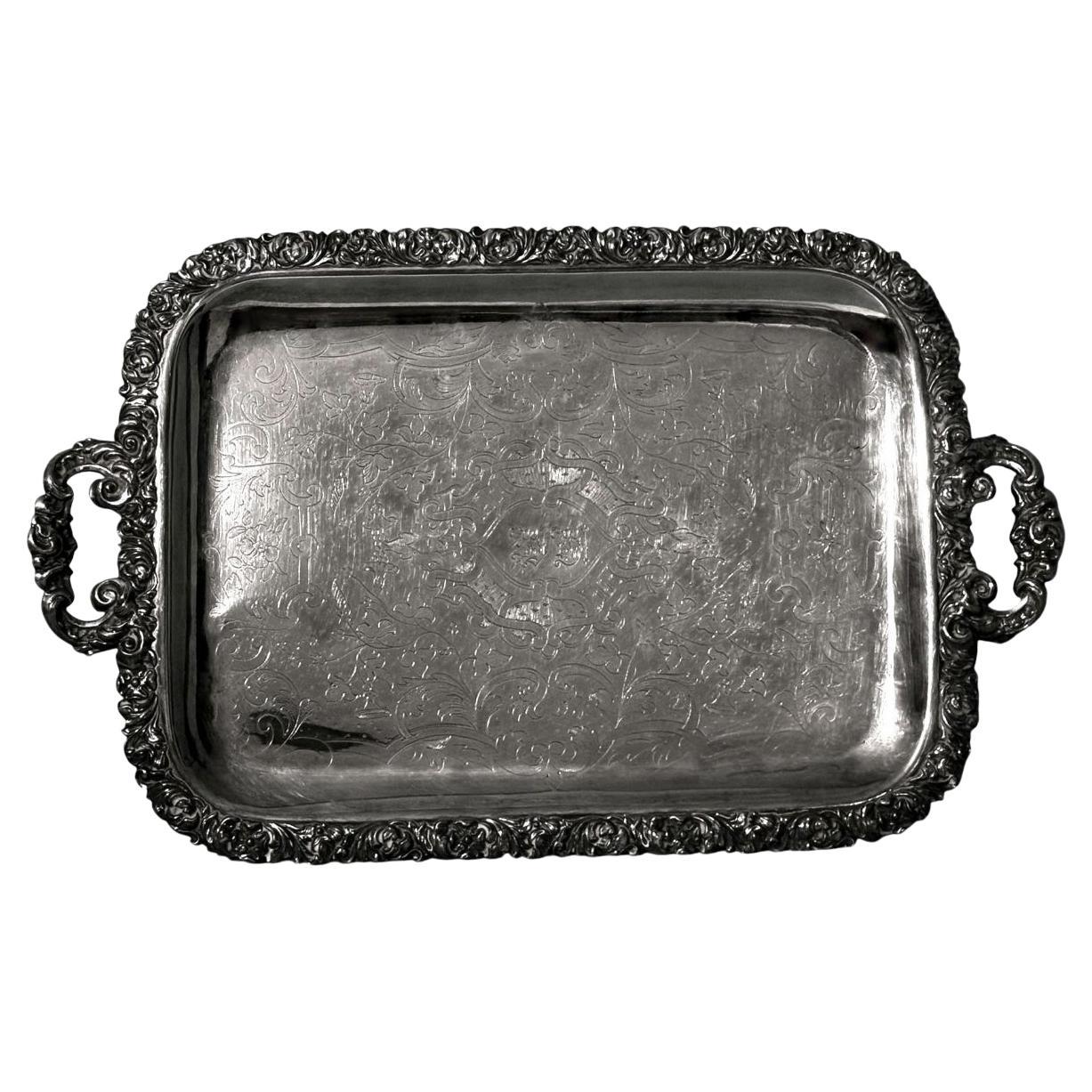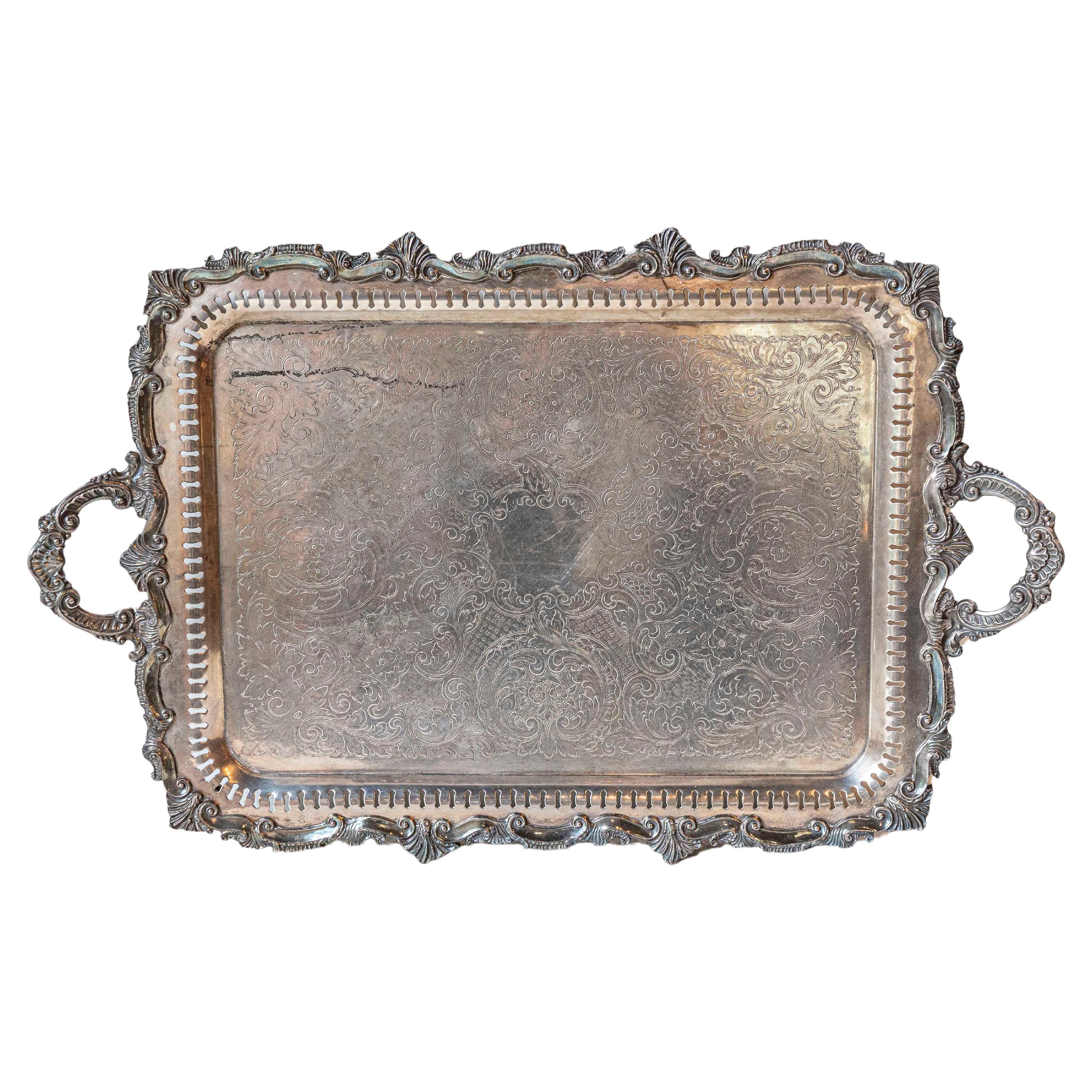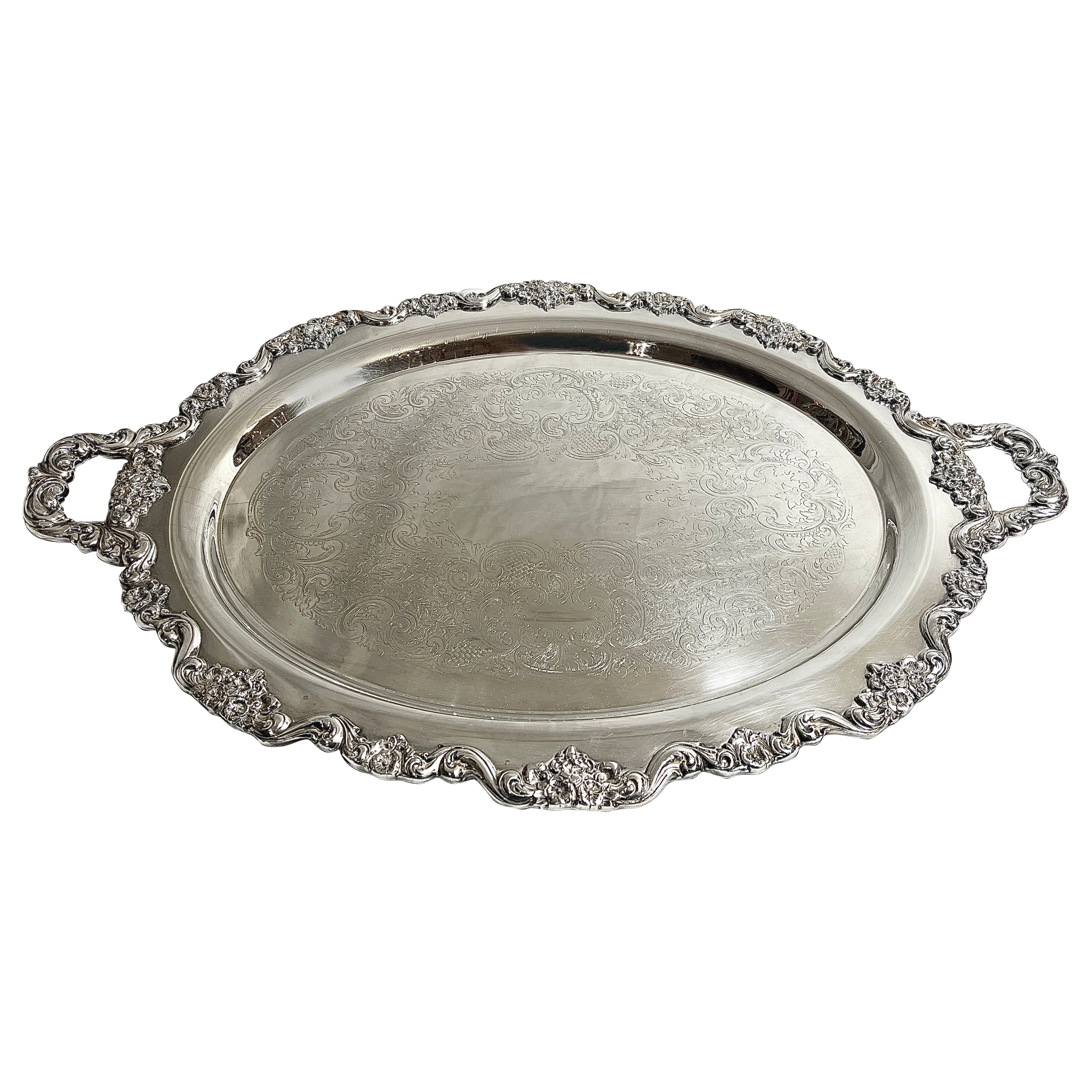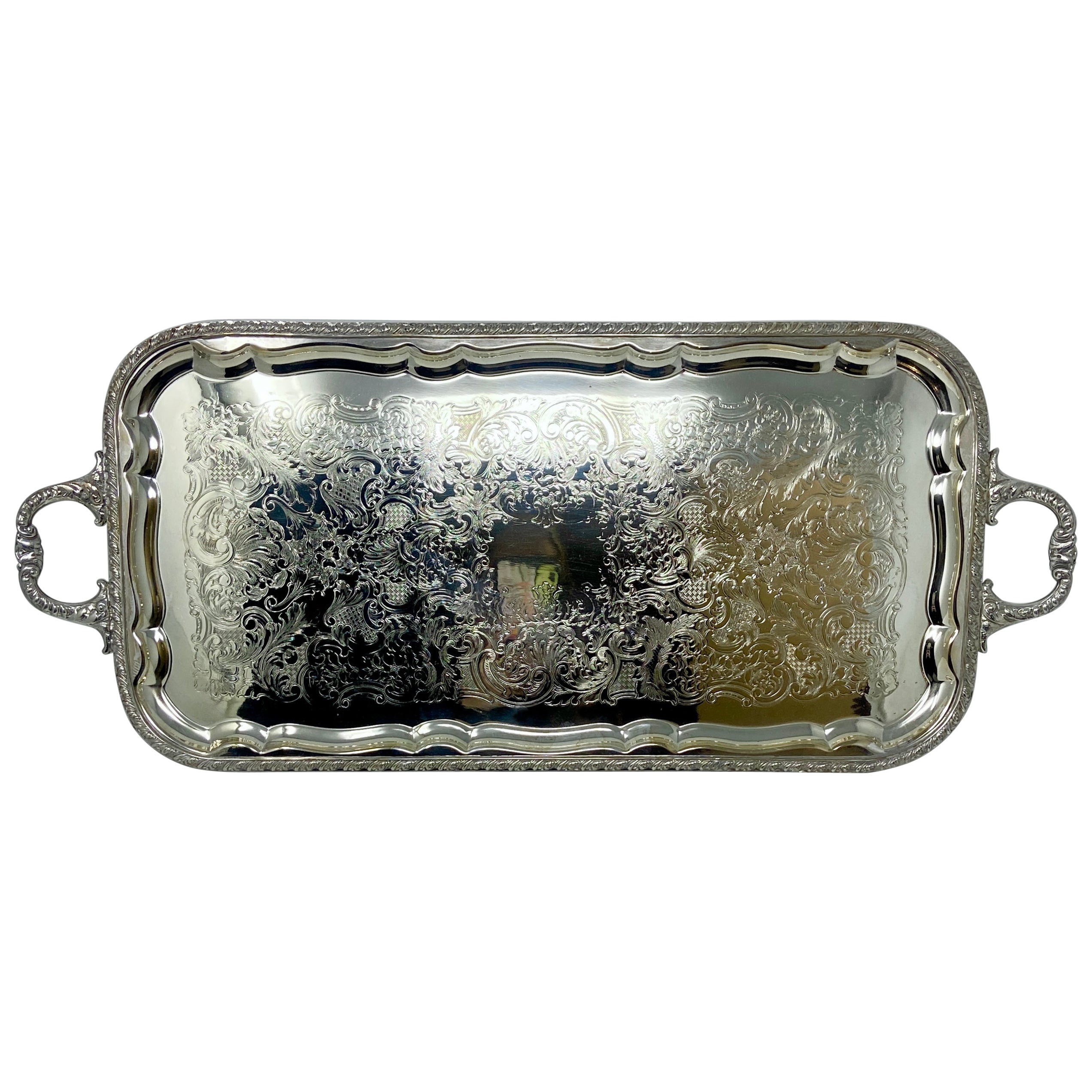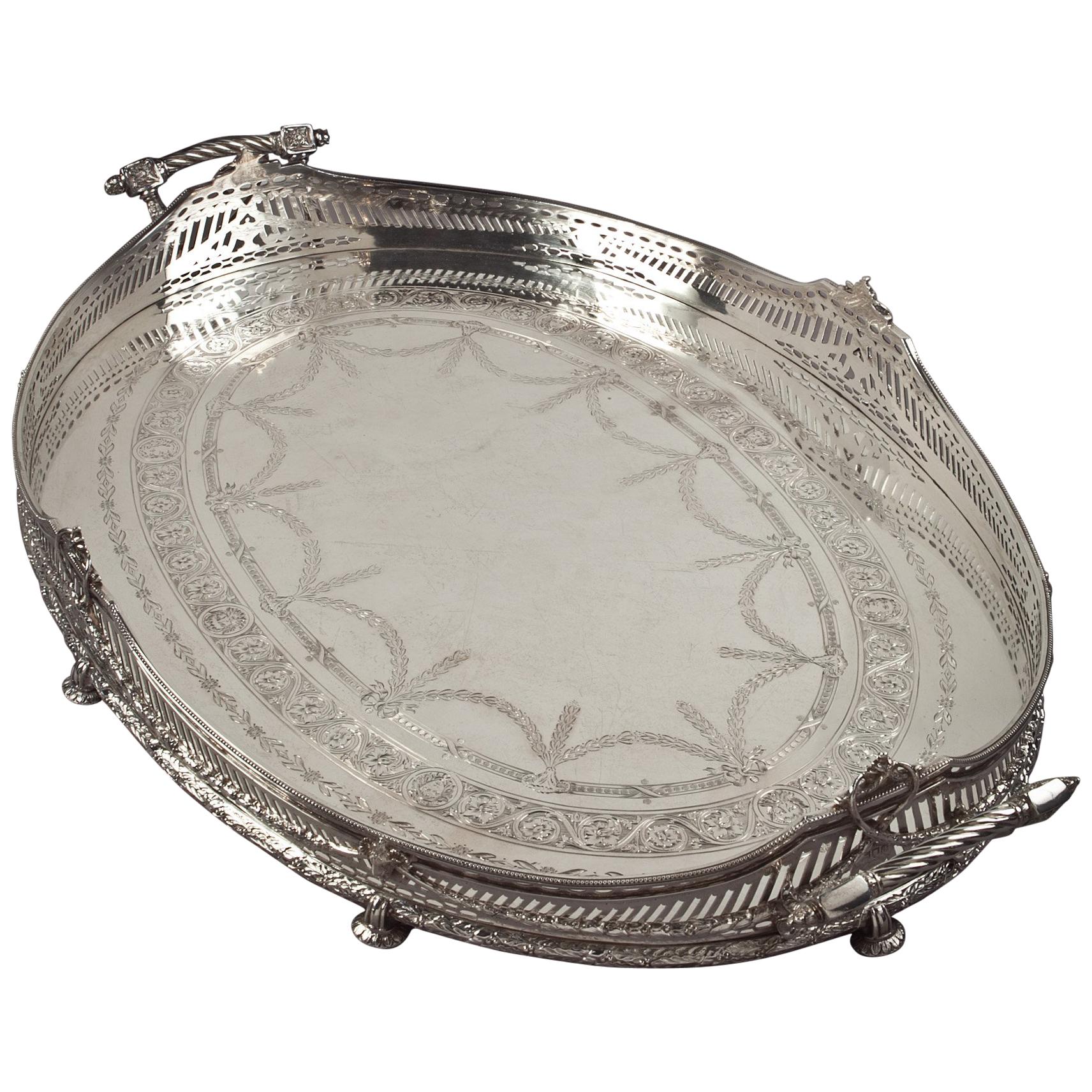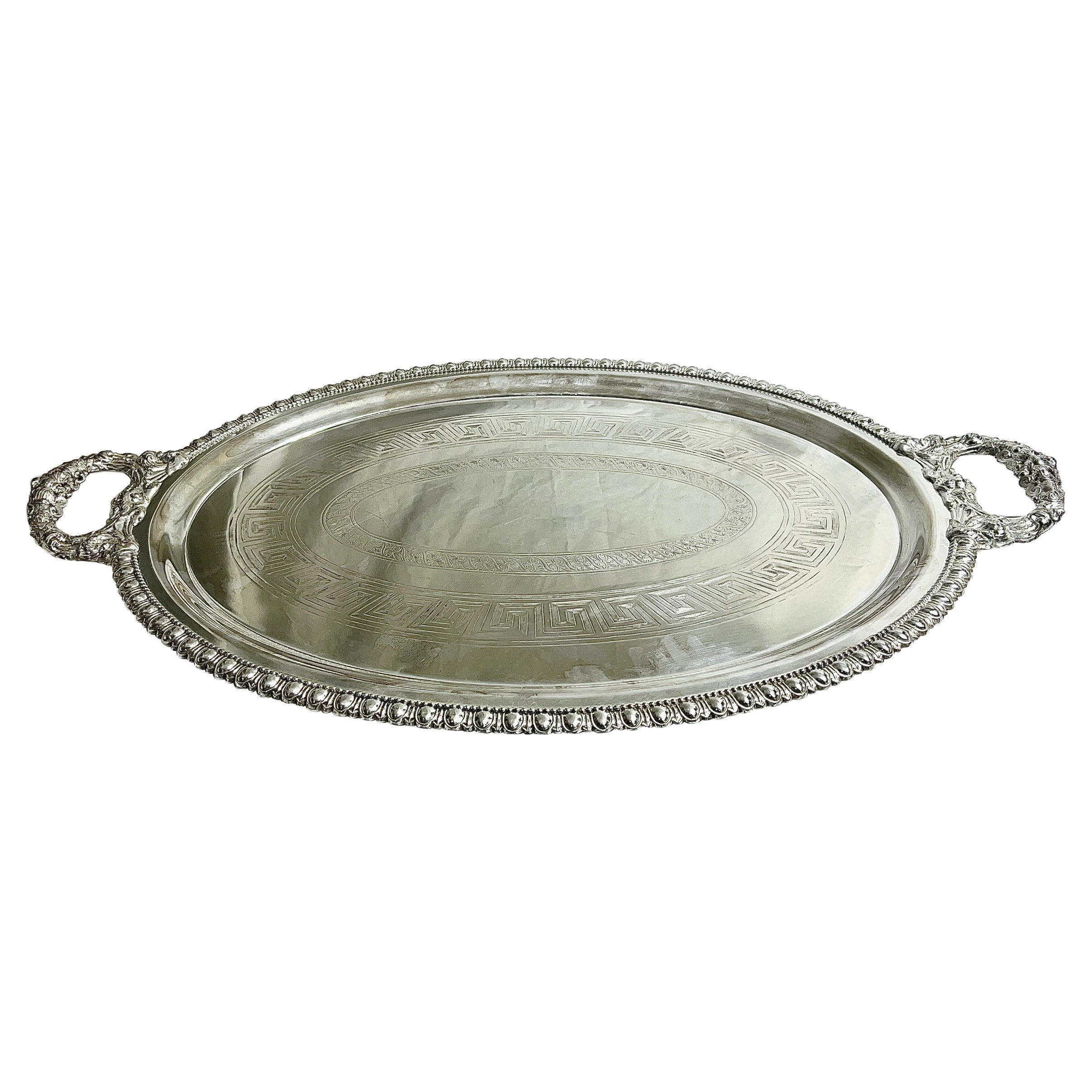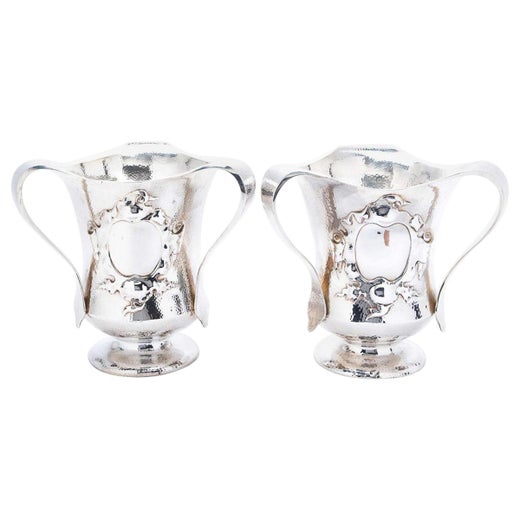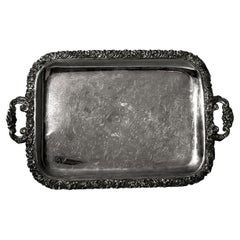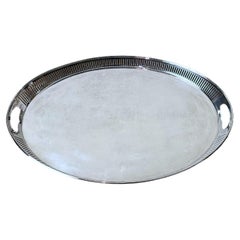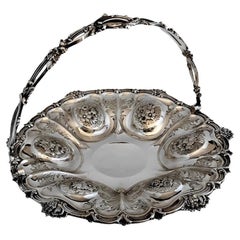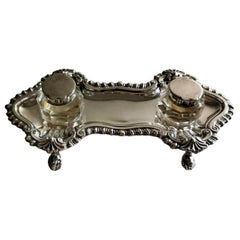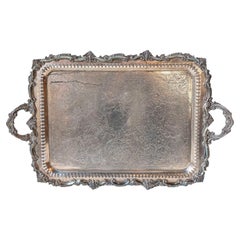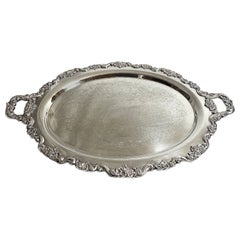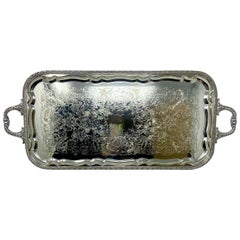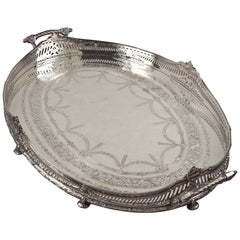Mappin Brothers English Tray Old Sheffield, Victorian Style Engraved And Marked
About the Item
- Creator:Mappin Brothers (Maker)
- Dimensions:Height: 1.19 in (3 cm)Width: 28.75 in (73 cm)Depth: 18.12 in (46 cm)
- Style:Early Victorian (Of the Period)
- Materials and Techniques:
- Place of Origin:
- Period:
- Date of Manufacture:1850
- Condition:Wear consistent with age and use. The tray is in good, unrestored condition, showing signs of 184 years of wear.
- Seller Location:Prato, IT
- Reference Number:Seller: 160751stDibs: LU4632242327392
Mappin Brothers
Appointed the Crown Jeweler in 2012, Mappin & Webb is one of the most widely recognized makers of silver and luxury goods in the world. With a roster of prestigious clients that has included six British monarchs as well as Charles Dickens, Winston Churchill and Harry Houdini, the historic firm has supplied fine jewelry and silver objects for royalty all over the globe including the Russian Imperial Household, the Siamese royal family and the Indian Maharaja.
Mappin & Webb’s origins are rooted in Jonathan Mappin’s workshop in Sheffield. He opened in 1775 with the intent to serve British society with the highest quality silverware ever made. His son and grandson, both named Joseph, carried on his vision until the mid-19th century when his four great-grandsons incorporated the business into Mappin Brothers Ltd. and embarked on a substantial expansion of the firm.
Nearing 1860, two of the great-grandsons, eldest Sir William Mappin and youngest John Mappin, left to pursue other opportunities. John opened his own business, Mappin & Company, and was joined two years later by his brother-in-law George Webb. Webb passed away in 1868 — the same year that saw the family form Mappin & Webb Co.
Webb’s name lived on in the company even after 1889 when the company became Mappin & Webb Ltd. In 1897, Mappin & Webb were granted their first Royal Warrant as silversmiths to Queen Victoria. The firm has been a holder of Royal Warrants since then.
Mappin & Webb supplied soldiers in the battle of Omdurman with their acclaimed Campaign watch. The company also supported wartime efforts during both World Wars in their enormous factory in Sheffield. Today Mappin & Webb is among the most prominent makers of Sheffield silver in the world.
Watches of Switzerland Operations Ltd. acquired Mappin & Webb in 1998 after a series of mergers and acquisitions.
Find antique Mappin Brothers serveware, decorative objects and other barware on 1stDibs.
- ShippingRetrieving quote...Shipping from: PRATO, Italy
- Return Policy
More From This Seller
View AllAntique Mid-19th Century British Early Victorian Sheffield and Silverplate
Sheffield Plate
Antique Late 19th Century British Late Victorian Sheffield and Silverplate
Silver Plate
Antique Late 19th Century British Early Victorian Sterling Silver
Sterling Silver
Antique Late 19th Century English Queen Anne Inkwells
Crystal, Silver Plate
Early 20th Century British Victorian Ceramics
Ceramic
Early 20th Century British Victorian Ceramics
Ceramic
You May Also Like
Early 20th Century English Platters and Serveware
Silver
Antique Late 19th Century English Sheffield and Silverplate
Sheffield Plate
Antique 19th Century English Sheffield and Silverplate
Sheffield Plate
Antique 1890s English Sterling Silver
Silver
Antique Late 19th Century English Sheffield and Silverplate
Silver Plate
Antique Mid-19th Century British Victorian Sheffield and Silverplate
Sheffield Plate
